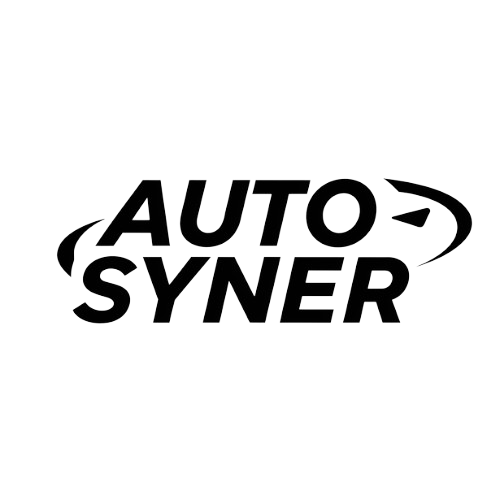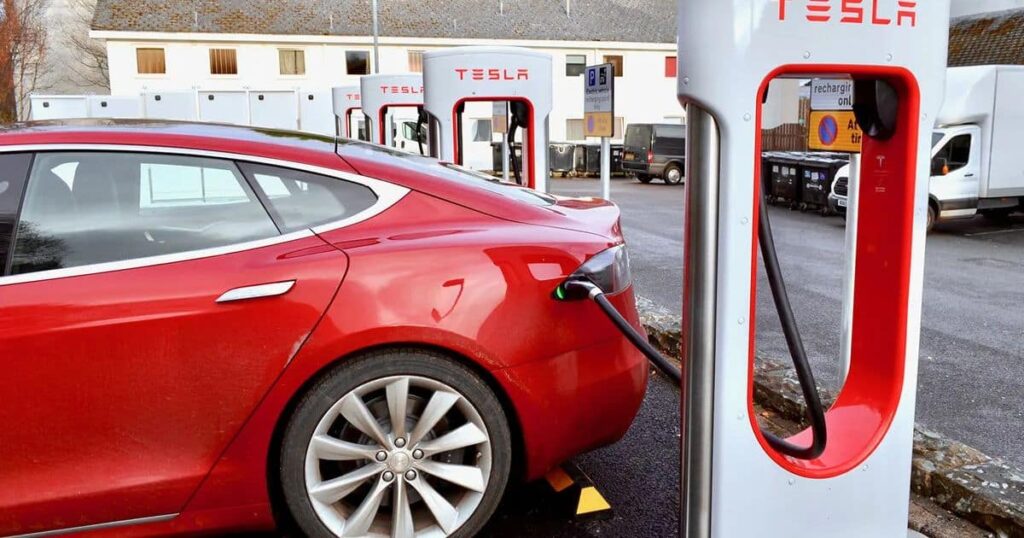Imagine this: you’re on a road trip with your brand new Tesla, cruising down the highway while streaming your favorite tunes. Suddenly, the dreaded low battery warning flashes on your dashboard.
You’ll need to find a charging station, and fast! But how long will you be stuck waiting for your Tesla to charge? Understanding charging times is crucial for any Tesla owner looking to maximize their electric driving experience.
Tesla’s Charging Levels Explained
Not all charging is created equal when it comes to Tesla’s vehicles. There are three main levels that determine how quickly you can refill that battery:
- Level 1: This is the most basic charging level, involving a standard 120V household outlet. It’s slow but will get you a few miles of range per hour of charging. Perfect for overnight top-ups.
- Level 2: Step it up a notch with Level 2 charging via a 240V outlet (like for electric dryers). This charges 3-4 times faster than Level 1 for better overnight charges or shorter top-up sessions.
- Level 3/Superchargers: Tesla’s crown jewel – their proprietary Supercharger network of DC fast chargers. These can charge your Tesla at the highest speeds, adding over 200 miles of range in just 15-30 minutes.
| Charging Level | Power Output | Typical Charge Rate |
| Level 1 | 1.4 – 1.9 kW | 3-5 miles/hr |
| Level 2 | Up to 19.2 kW | 10-25 miles/hr |
| Level 3/Superchargers | Up to 250 kW | 200+ miles in 15 mins |
Tesla Charging Speeds: How Fast Can You Charge?
While those Supercharger speeds sound amazing, real-world charge times depend on several variables:
- Battery Size: Models with larger battery packs can accept higher charge rates initially before tapering off.
- Battery Percentage: Charging goes fastest from 10-50%, then slows down significantly past 80% to prevent battery degradation.
- Charging Level: Obviously, Level 3 is much faster than Level 2 which beats Level 1.
- Outside Temperature: Extreme cold can temporarily reduce charging speeds until the battery warms up.
- Battery Preconditioning: Using the in-car preconditioning setting helps prepare the battery for optimal charging.
So while those peak Supercharger rates are possible, they require ideal conditions like a warm day and battery around 10-50% capacity. Real-world charging is usually a bit slower.
Charging a Tesla From Zero to 100%: The Honest Truth

Here’s the reality – you’ll virtually never want to fully charge from 0 to 100% in one session, especially at a Supercharger. Experts recommend:
- Only charging to around 80-90% maximum under normal circumstances to prolong battery life.
- At Superchargers, stopping once you have enough range for your current travel needs plus a safety buffer.
With that in mind, let’s look at some realistic 10-80% charge time estimates for Tesla’s models across the different charging levels:
Tesla Model 3 | Range: 272 miles | $46,990
- Level 1 (120V): 0-100% in 4-5 days. 10-80% in around 36 hours.
- Level 2 (240V): 0-100% in 8-12 hours. 10-80% in 6-8 hours.
- Supercharger: 0-100% in around 45 mins. 10-80% in just 20-30 mins!
Tesla Model 3 Long Range | Range: 358 miles | $57,990
- Level 1: 0-100% in 6-7 days. 10-80% in around 48 hours.
- Level 2: 0-100% in 10-14 hours. 10-80% in 8-10 hours.
- Supercharger: 0-100% in around 1 hour. 10-80% in 25-35 mins.
Tesla Model 3 Performance | Range: 315 miles | $62,990
- Level 1: 0-100% in 5-6 days. 10-80% in around 42 hours.
- Level 2: 0-100% in 9-12 hours. 10-80% in 6-8 hours.
- Supercharger: 0-100% in 50-60 mins. 10-80% in 25-35 mins.
The Long Range model’s extra battery capacity results in longer charge times overall, but all Model 3 trims can reach typical travel ranges from 10-80% in under an hour at a Supercharger.
Tesla Model Y Long Range | Range: 330 miles | $65,990
- Level 1: 0-100% in around 6 days. 10-80% in 45-50 hours.
- Level 2: 0-100% in 11-14 hours. 10-80% in 7-9 hours.
- Supercharger: 0-100% in 1-1.25 hrs. 10-80% in 30-40 mins.
Read More Post:
Automotive Batteries: Understanding Their Hazard Classification
Tesla Model Y Performance | Range: 305 miles | $69,990
- Level 1: 0-100% in 5-6 days. 10-80% in 40-45 hours.
- Level 2: 0-100% in 9-12 hours. 10-80% in 6-8 hours.
- Supercharger: 0-100% in 50-60 mins. 10-80% in 25-35 mins.
Tesla Model S | Range: 405 miles | $104,990
- Level 1: 0-100% in around 8 days. 10-80% in 60+ hours.
- Level 2: 0-100% in 12-16 hours. 10-80% in 8-10 hours.
- Supercharger: 0-100% in 1.25-1.5 hrs. 10-80% in 35-45 mins.
Tesla Model S Plaid | Range: 396 miles | $135,990
- Level 1: 0-100% in 7-8 days. 10-80% in 55-60 hours.
- Level 2: 0-100% in 12-15 hours. 10-80% in 7-9 hours.
- Supercharger: 0-100% in 1-1.25 hrs. 10-80% in 30-40 mins.
The U.S. News & World Report named the Model S one of the Best Electric Cars for 2022 thanks to its blistering performance and excellent driving range.
Tesla Model X | Range: 351 miles | $120,990
- Level 1: 0-100% in 6-7 days. 10-80% in 50-55 hours.
- Level 2: 0-100% in 12-16 hours. 10-80% in 8-10 hours.
- Supercharger: 0-100% in 1.25-1.5 hrs. 10-80% in 35-45 mins.
Tesla Model X Plaid | Range: 333 miles | $138,990
- Level 1: 0-100% in 6-7 days. 10-80% in 45-50 hours.
- Level 2: 0-100% in 11-14 hours. 10-80% in 7-9 hours.
- Supercharger: 0-100% in 1-1.25 hrs. 10-80% in 30-40 mins.
As you can see, even Tesla’s largest battery packs can conveniently reach typical driving ranges within an hour or less when taking advantage of their Level 3 Supercharger network.
Tips to Maximize Your Tesla’s Charging Speed
While Tesla’s charging times are already quite impressive, there are some additional tips and tricks to further optimize your charging experience:
- Use Battery Preconditioning: Before charging, enable the preconditioning setting in your Tesla to warm up the battery pack for peak charging rates.
- Avoid Charging During Peak Hours: Try to charge during off-peak times when electricity rates are lower and Superchargers are less crowded.
- Plan Ahead with the Trip Planner: Tesla’s navigation software can map out your route with Supercharger stops factored in for maximum efficiency.
- Upgrade to the Nicki Upgrade: For older Model S/X cars, the paid Nicki Upgrade can unlock faster charging speeds.
- Keep Your Battery in the Ideal Temperature Range: Extreme hot or cold temperatures can temporarily reduce charging speeds until the battery regulates itself.
- Avoid Higher State of Charges When Possible: As mentioned, charging to 100% frequently can degrade your battery over time, so aim for 80-90% max.
- Take Advantage of Free Destination Charging: Many hotels, restaurants and other businesses offer free Level 2 charging for Tesla owners.
How Tesla’s Charging Network Compares

One of the key advantages for Tesla owners is the brand’s proprietary Supercharger network of over 35,000 Level 3 charging stalls worldwide. Here’s how it stacks up:
Charging Speed
- Superchargers can deliver peak rates of up to 250kW currently
- Most other DC fast chargers like EVgo, ChargePoint, and Electrify America top out around 50-350kW currently
- However, charging speeds are comparable across all networks at lower state of charges
Convenience and Access
- Superchargers are primarily located along major highway corridors and near urban centers
- Other networks often have chargers installed at grocery stores, retail parking lots etc.
- Superchargers are currently exclusive to Teslas, while other networks are universal
Pricing
- Supercharging costs around $0.25-$0.28 per kWh, plus an idle fee after charging
- Pricing varies for other networks, but public Level 3 charging generally costs $0.20-$0.50/kWh
Overall, the Supercharger network provides Tesla owners with a focused, seamless charging experience on road trips. Third-party providers are quickly building out their own networks for added convenience in cities.
Also Read:
How Much Do Bus Drivers Make? A Comprehensive Guide
People Also Ask (FAQ’s)
How long does a Tesla take to charge at a charging station?
At a Supercharger, it takes about 15-30 minutes to charge up to 80%.
How long does a full charge last on a Tesla?
A full charge can last 250 to 370 miles, depending on the model.
How much does it cost to charge a Tesla at a charging station?
It typically costs $10 to $25 for a full charge at a Supercharger.
How long does it take to charge a Tesla in Australia?
Similar to other locations, it takes about 15-30 minutes at a Supercharger.
How fast is a Tesla charger?
Tesla Superchargers can add up to 200 miles of range in 15 minutes.
Conclusion
As you can see, charging a Tesla can take anywhere from a few minutes to a couple of days depending on your vehicle, the charging level, battery state and other conditions. However, with Tesla’s powerful Supercharger network and growing Level 3 charging infrastructure, reaching adequate ranges for daily driving or road trips is becoming easier than ever before.
Invest in a home Level 2 charging setup, remember to precondition your battery, plan out Supercharger stops for longer trips, and take advantage of public charging where possible. With some simple optimizations, you’ll be able to charge up and hit the road with confidence in your Tesla’s impressive all-electric driving range!







